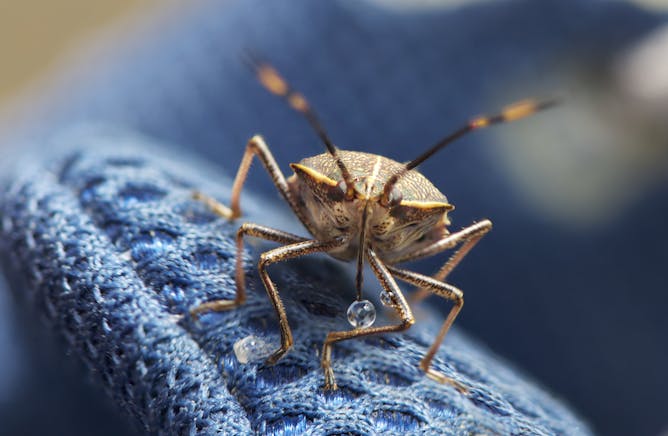|
Why do we love fear? Today in The Conversation Canada, Gerald Walton of Lakehead University helps us understand the emotional connection humans have with fear – everything from horror movies to how fear is used as a political tool.
Blayne Haggart of Brock University has provided an analysis of the new USMCA trade agreement and concludes it will dramatically alter North America’s economic structures, “increasing American dominance over its neightbours.”
And finally…as the weather gets colder, we all spend more time inside. This applies to bugs as well as humans. Rosa da Silva of McMaster University heads up something called the “Stink Bug Project,” and she tells us how insects have overcome the challenge of cold climates.
Regards,
|

The original Halloween movie has been remade for 2018.
Dimension Films
Gerald Walton, Lakehead University
We love to be scared by creepy movies. But fear has other uses too. It can be used negatively by politicians to control us, but can also be a tool to harness internal change.
|

U.S. President Donald Trump announces a revamped North American free trade deal in the Rose Garden of the White House in Washington on Oct. 1, 2018.
(AP Photo/Pablo Martinez Monsivais)
Blayne Haggart, Brock University
The USMCA, if ratified, will fundamentally alter North America’s political and economic structures, increasing American dominance over its neighbours.
|

Stink bug sightings are on the rise. In winter, they tend to move indoors to wait out the cold weather.
(John Slaney/Flickr)
Rosa da Silva, McMaster University
With the onset of cooler temperatures and shorter days, some insects pack-up and migrate to warmer climates. Others, including stink bugs, take up residence in our homes.
|
Culture + Society
|
-
Tanika Koosmen, University of Newcastle
The earliest surviving example of man-to-wolf transformation is found in The Epic of Gilgamesh, from around 2,100 BC. But the werewolf as we now know it first appeared in ancient Greece and Rome.
|
|
Arts
|
-
Tamar Carroll, Rochester Institute of Technology; Joshua Meltzer, Rochester Institute of Technology
For decades, the alternative weekly's photographers served as the eyes of the streets, working with activists to document and publicize the anguish and rage of everyday New Yorkers.
|
|
Health + Medicine
|
-
Gordon Smith, University of Cambridge
Stillbirths affect many women but the science of finding out which pregnancies are at risk hasn't moved on as much as you would think.
|
|